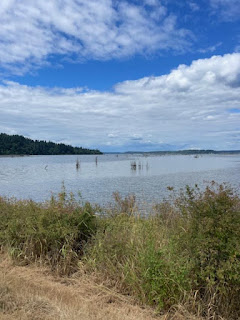The Nisqually River stretches 78-miles. The rivers run along forested, mountainous terrain and farmlands in three counties, many small towns, the Nisqually Indian Reservation and Joint Base Lewis McChord. All before entering the Puget Sound.
The Nisqually River is fed by five different glacier points on Mount Rainer and flows into south Puget Sound through Nisqually Wildlife Refuge. Of which is the largest estuary restoration project on the Pacific Coast. The Nisqually River is the only one in the United States where its headwaters is fed from melted water in a nation park. It remains as one of the healthiest and least developed of the major Puget Sound rivers.
Under the 1972 Washington State Shorelands Management Act, the river and its tributaries are home to five native salmon species. Which are, the Chinook, coho, chum, pink salmon and steelhead trout. Some of the at-risk species found in the watershed are Chinook salmon, steelhead, northern spotted owls, marbled murrelets, bald eagles, northern goshawks, pileated woodpeckers and peregrine falcons.
The Nisqually River influences the water quality of the south Puget Sound, and it provides more than half of the freshwater flow entering it. Fun fact, it is also the primary source of drinking water for the City of Olympia which is where I live.

Comments
Post a Comment